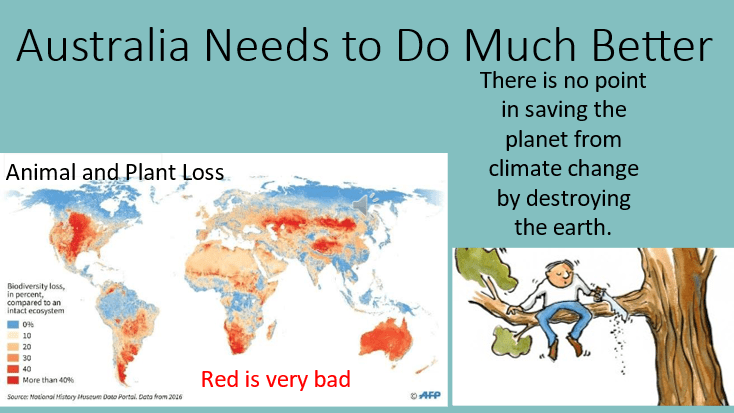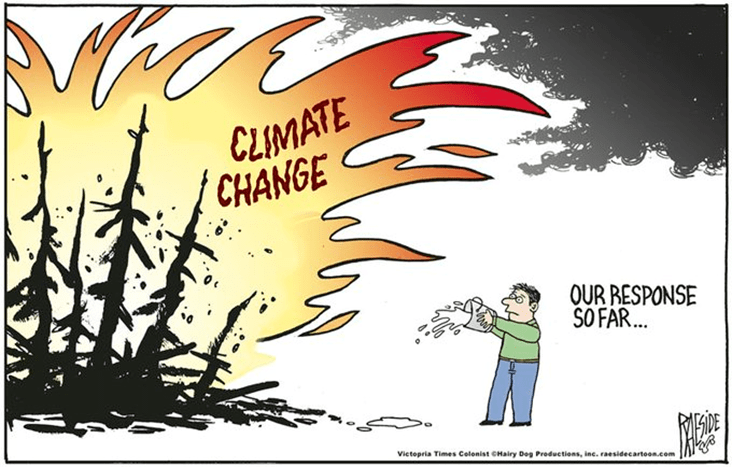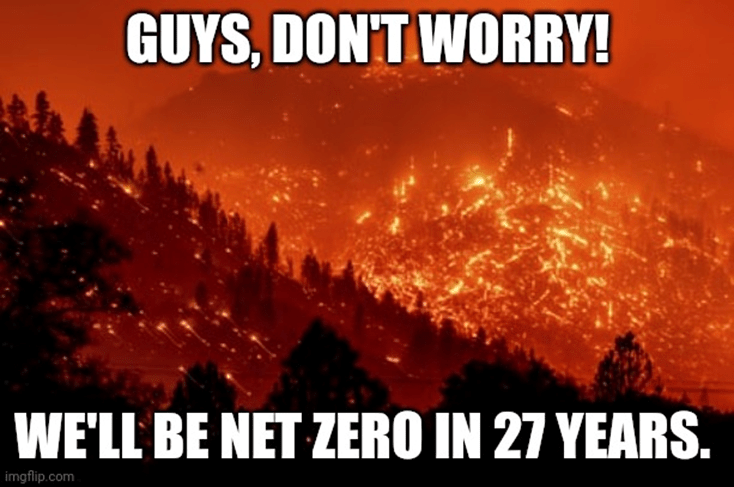While we are stressing trying to make our electricity production low carbon, we are overlooking the impact of fire. Dozens, if not hundreds of scientists around the world are doing their best to measure carbon fluxes. It is easy to get lost looking at all the detail and miss the big picture. Some years Australia is a net carbon dioxide sink, some years we are a small net producer of carbon dioxide. It all depends on our bush fire frequency and intensity plus the rainfall patterns and soil moisture levels in any particular year. Looking at the data illustrated in my last blog, Australia only emitted 0.1% of the carbon dioxide emitted to the atmosphere from 2010 to 2019. Nature is doing all the hard work for us. But our record for protecting our natural landscape and our biodiversity could be much better.

Even WORLDWIDE nature is removing over half the carbon we produce. Both Land and Sea are doing the work in so many different ways.

Yet all over the world, climate change policies result in billions of dollars being spent on new infrastructure that has not reduced carbon dioxide emissions nearly enough. Are we spending our resources wisely?

Here is a reminder of Australia’s carbon budget from 2010 to 2019 shown in millions of tons of carbon dioxide per year.

The carbon dioxide emitted by fire is almost equal to the emissions from fossil fuels and over half of our land sinks. One has to ask where we would get the best value for dollars spent. We are at a crossroads, if we do not improve our fire prevention we face a future with horrific bushfires, losing more and more lives, property, and livelihoods while killing off Nature’s ability to help us. The cartoon below illustrates what could be Australia’s future in a somewhat sarcastic manner if we don’t start thinking smarter.

What should we do with the resources we have?
- Upgrade our fire fighting ability with quicker, scientifically backed fire fighting techniques. A stitch in time saves nine and saves lots of human lives and property, carbon emissions PLUS our precious BIODIVERSITY.
- Use the best sources of energy.
I am not any sort of expert on fires, but I see so many wonderful articles on the web from firemen, scientists, and indigenous experts that need to be heeded. Economically, we spend 3% on protection and 97% after disasters happen. If we keep doing what we do now, our carbon emissions will be huge. Our land could become unlivable.
Australia currently depends on our Rural Fire Brigades, volunteers who put their lives at risk with outdated and insufficient equipment.
This year up where I live in Far North Queensland, the undergrowth stayed too wet for cool burns until later in the year. When the undergrowth was just right, a total fire ban was put in place by those 2,000 km away. The result: few cool burns and later, lots of rampaging fires because the fuel load was too high. This has thoroughly frustrated our local fire fighters.
Indigenous fire systems work well in parts of Australia. We need to learn from our Indigenous people use their skill and knowledge far more. It is so much cheaper to prevent fires than to pay for all the damage later.
Modern satellite monitoring can really assist if the information reaches the right people very quickly. Most fires start from lightening strikes when conditions are dry. We can pinpoint them quickly now. What we need is the ability to reach these fires fast and put them out as quickly as possible.